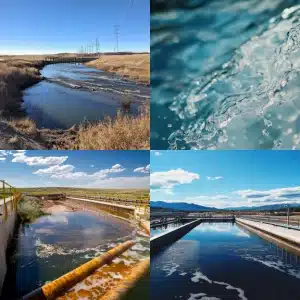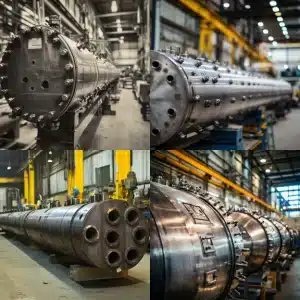The EPA, or Environmental Protection Agency, is a U.S. federal agency established in 1970 to protect human health and the environment by regulating pollution, hazardous waste, and industrial practices. Understanding and complying with EPA regulations is crucial for businesses to operate sustainably, avoid fines, and maintain public trust.
Why Understanding “What Is EPA” Matters
When navigating industrial regulations and environmental standards, one question arises frequently: what is EPA? Understanding the Environmental Protection Agency (EPA) is crucial for manufacturers, business owners, and project managers striving to remain compliant, efficient, and eco-responsible. More than just an acronym, the EPA represents a powerful force that shapes how industries operate across the United States. At Red River, we believe that knowing what is EPA isn’t just about compliance it’s about leadership in sustainable manufacturing and integrating standards into every project.
A Quick Definition of EPA
The EPA stands for the Environmental Protection Agency, a U.S. federal agency founded in 1970. Its mission is to protect human health and the environment by enforcing regulations that control pollution, manage hazardous waste, and ensure clean air and water. Learn more about its origins on Wikipedia. Companies can align with EPA guidance by adopting best practices like pressure vessel inspection and metal fabrication processes.
History of the Environmental Protection Agency
Created in response to public demand for cleaner air and water, the EPA consolidated various environmental responsibilities under one agency. Over the decades, it has enacted landmark laws like the Clean Air Act and the Clean Water Act, establishing a baseline for industrial responsibility and environmental integrity. Businesses engaged in prefabrication or modular skid construction benefit from understanding these historical developments.
What Is EPA’s Role in Industry Compliance?
The EPA plays a pivotal role in shaping how industries from manufacturing to power generation operate safely and sustainably. Manufacturers must meet EPA standards on air emissions, water discharge, and hazardous waste. Compliance not only protects the environment but shields companies from fines and operational shutdowns.
Explore how EPA levels affect industries
Key EPA Regulations You Should Know
Several EPA regulations directly influence industrial operations. Here are some of the most important:
- Clean Air Act (CAA): Regulates emissions from stationary and mobile sources. Learn how we ensure compliance in our compressed air tanks and air receiver vessels.
- Clean Water Act (CWA): Governs water pollution and discharge permits. Proper water separation and fuel-water separator systems are essential for compliance.
- Resource Conservation and Recovery Act (RCRA): Controls hazardous waste. Our metal fabrication and welding processes follow best practices to minimize waste.
- Toxic Substances Control Act (TSCA): Regulates chemical safety, relevant to desiccant air dryers and molecular sieve handling.
- National Environmental Policy Act (NEPA): Requires impact assessments for major projects. Large-scale pressure vessel manufacturing incorporates these assessments for environmental safety.
Each of these programs directly influences how Red River approaches pressure vessel manufacturing.
Understanding What Is EPA: Why It’s Crucial
Understanding what is EPA is foundational for any company working in regulated industries. At Red River, we integrate EPA compliance into every stage of our operations not just to meet federal standards but to lead with integrity. Whether fabricating domestic water system vessels or industrial pressure tanks, EPA-aligned practices enhance operational safety, sustainability, and efficiency.
We also educate our team on ASME-certified pressure vessels and separator technology to ensure industry-leading standards are maintained.
Partner with Us for a Greener, Compliant Future
Want a partner that prioritizes both precision and the planet? Contact Red River today or request a quote to start building a cleaner, compliant future. Learn how we integrate EPA compliance into skid fabrication, pressure vessel inspection, compressed air systems, and fuel-water separation solutions.
Frequently Asked Questions
1.What is EPA?
The Environmental Protection Agency (EPA) is a U.S. government agency responsible for protecting human health and the environment. It creates and enforces regulations that control pollution, monitors environmental conditions, and provides guidance for industries and communities.
2.When was the EPA established?
The EPA was created in December 1970 after growing concerns about pollution and environmental damage. Events such as rivers catching fire due to industrial waste and rising air pollution levels led to the need for one federal agency dedicated to environmental protection.
3.What industries does the EPA regulate?
The EPA regulates many industries that affect the environment, including:
- Manufacturing – chemical use, emissions, and waste disposal
- Oil and Gas – drilling, refining, and fuel emissions
- Construction – stormwater runoff, asbestos, and site contamination
- Agriculture – pesticide and fertilizer use, water pollution
- Transportation – vehicle emissions and fuel standards
4.Why is EPA compliance important?
Compliance ensures that businesses:
- Reduce environmental harm
- Protect public health
- Avoid heavy fines and lawsuits
- Improve trust with customers, communities, and investors
5.What are common EPA violations?
Frequent violations include:
- Exceeding allowed air emissions
- Improper disposal of hazardous waste
- Water contamination from spills or runoff
- Not having the proper permits or licenses
- Failure to keep accurate records or reports
Key Takeaways
- EPA stands for the Environmental Protection Agency, a key U.S. regulatory body.
- Understanding EPA rules is vital for operational success and sustainability.
- Compliance prevents fines and enhances public trust.
- Red River builds EPA standards into every project.
- Learn more about EPA levels and their impact.
Visit EPA.gov to explore official resources.
Related Blog Post
- Conductivity Levels in Drinking Water: Why They Matter for Safety and Industry
- Common Signs Your Drinking Water May Be Unsafe | Red River
- Understanding Unregulated Drinking Water Sources | Red River
- Knowing Safe Drinking Water Standards | Red River
- Why Drinking Water Quality Standards Matter | Red River
- Understanding EPA Contaminants and Their Impact | Red River




